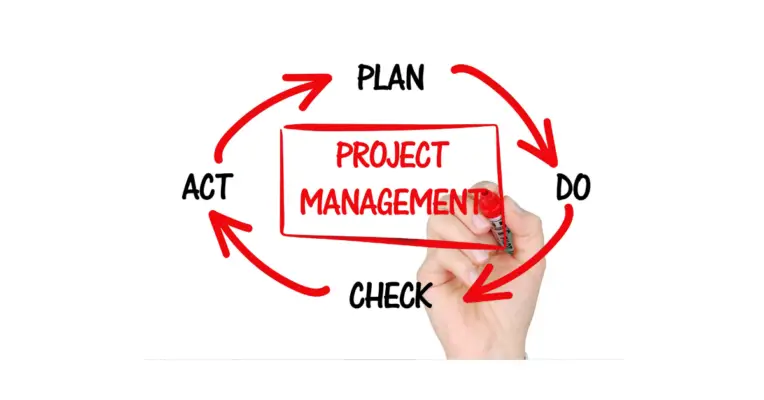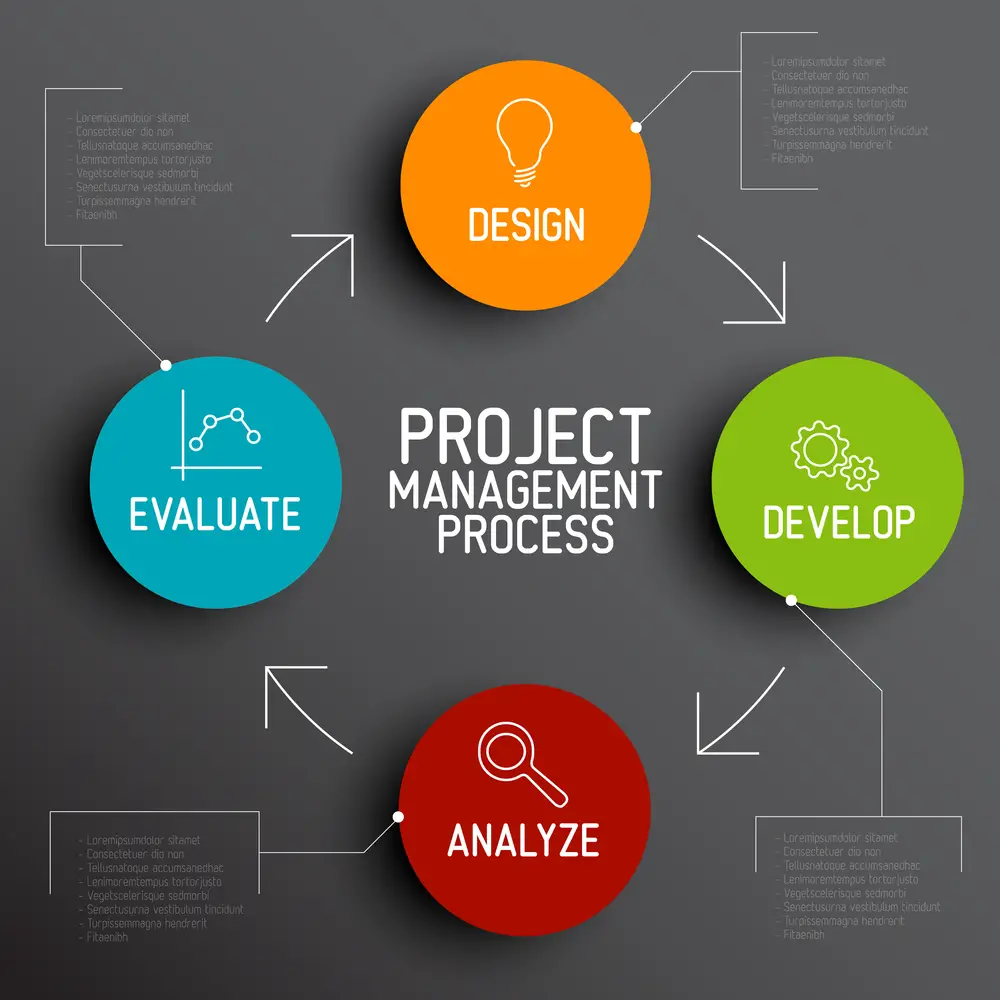Any project inevitably faces numerous uncertainties, obstacles, and potential pitfalls. Successfully navigating these challenges requires a solid grasp of project risk management. What are the key steps to effective risk management? In this blog post, we explore the four major steps of project risk management: identifying potential risks, assessing their impact and probability, prioritizing risks, and developing appropriate response strategies.
Understanding and implementing these crucial steps can minimize the adverse effects of risks on your project’s objectives and ensure smooth execution. Both experienced project managers and newcomers to this exciting field will benefit from valuable insights and actionable strategies, helping them stay ahead of potential issues and deliver exceptional project outcomes.

Mastering the Four Major Steps of Project Risk Management
Effectively managing project risks is critical to the success of any project. Mastering the four major steps of project risk management – identifying potential risks, assessing their impact and probability, prioritizing risks, and developing effective risk response strategies – can significantly improve your ability to handle challenges and uncertainties.
This section will delve into each step to provide valuable insights and best practices for streamlining your risk management efforts.
Step 1 – Identifying Potential Risks in Your Project
The first step in managing project risks is identifying potential risks. Comprehensive risk identification involves examining all aspects of your project, including project scope, schedule, resources, stakeholders, and external factors. Techniques for risk identification include
- Brainstorming sessions with your project team to identify potential risks based on their experience and expertise.
- Conduct interviews with stakeholders to gather insights on risks they might have encountered in similar projects.
- Analyzing historical data and lessons learned from past projects.
- Utilizing checklists and industry standards to ensure a thorough examination of potential risks.
Documenting identified risks in a risk register can help you maintain a comprehensive overview of your project’s risk landscape and facilitate easy monitoring and management.
Step 2 – Assessing the Impact and Probability of Identified Risks
Once potential risks are identified, assessing their impact and probability is crucial. This evaluation allows you to gauge the severity of each risk, enabling informed decision-making on risk prioritization and resource allocation. Assessing risks involves two key elements:
- Impact: Determine the potential consequences of each risk on your project objectives, such as cost overruns, delays, or reduced quality.
- Probability: Estimate the likelihood of each risk materializing based on available data, expert judgment, or historical trends.
Use a risk matrix to visually represent risks based on their impact and probability, providing a quick overview of the most critical risks that demand immediate attention.
Step 3 – Prioritizing Risks for Efficient Management
After assessing the impact and probability of identified risks, prioritize them to determine which risks require the most attention and resources. Prioritizing risks lets you focus on the most significant threats to your project’s success, ensuring efficient risk management.
A common prioritization method is the Risk Priority Number (RPN), calculated by multiplying the risk’s impact and probability. This numerical value allows you to rank risks and allocate resources effectively.

Step 4 – Developing Effective Risk Response Strategies
The final step in the risk management process is developing appropriate risk response strategies. These strategies aim to either mitigate, accept, transfer, or avoid risks, depending on their priority and potential impact on the project. Consider the following approaches when developing risk response strategies:
- Mitigation: Implement measures to reduce the impact or probability of a risk. For example, allocating additional resources or time to address potential issues.
- Acceptance: Acknowledge and monitor the risk, preparing to address its consequences if it materializes. This strategy is typically used for low-priority risks.
- Transfer: Shift the responsibility for managing the risk to a third party, such as through outsourcing or insurance.
- Avoidance: Change the project’s scope, schedule, or resources to eliminate the risk entirely.
Periodically review and update your risk response strategies to ensure they remain relevant and effective as the project progresses.
Mastering these four major steps of project risk management enables you to confidently navigate project uncertainties, ensuring smoother execution and successful project outcomes.
Conclusion
The four major steps of project risk management – identifying potential risks, assessing their impact and probability, prioritizing risks, and developing effective risk response strategies – play a crucial role in ensuring the success of any project. Thoroughly implementing these steps allows you to navigate project uncertainties better, protect valuable resources, and maintain stakeholder confidence.
As the project landscape evolves and grows increasingly complex, possessing the knowledge and best practices necessary to manage risks effectively becomes more important than ever.
Successful project risk management is not a one-time effort but rather an ongoing process that requires vigilance, adaptability, and collaboration. Staying proactive and engaging your team and stakeholders in the risk management process empowers you to address potential issues before they escalate, contributing to the overall success of your projects.
Honing your skills in project risk management and embracing the four major steps outlined in this blog post helps you elevate your project management abilities and deliver exceptional results for your organization and stakeholders.

Chris Ekai is a Risk Management expert with over 10 years of experience in the field. He has a Master’s(MSc) degree in Risk Management from University of Portsmouth and is a CPA and Finance professional. He currently works as a Content Manager at Risk Publishing, writing about Enterprise Risk Management, Business Continuity Management and Project Management.

